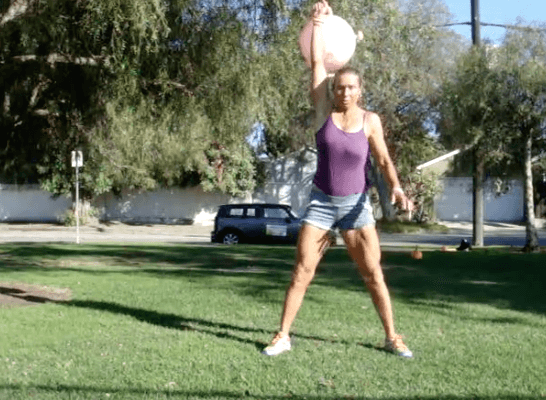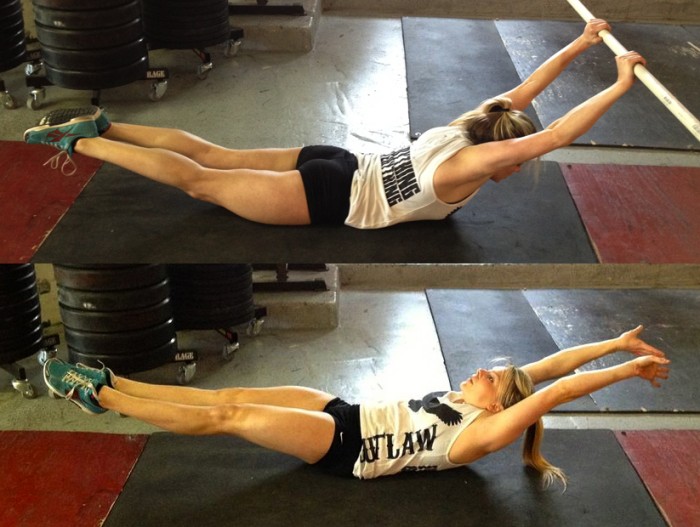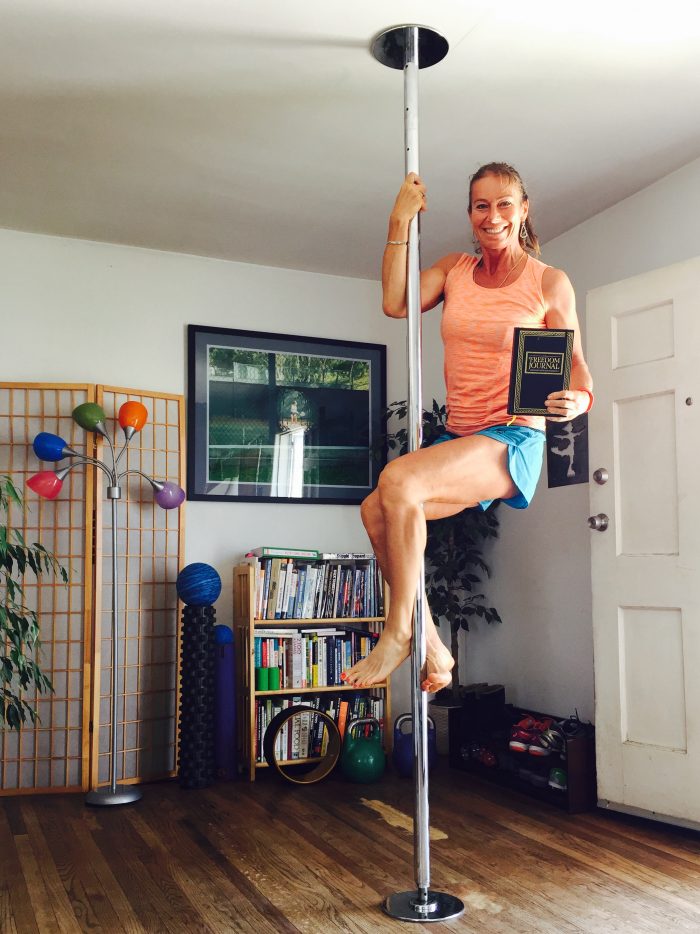Overhead carry exercises strengthen your shoulders, triceps, and wrists, while engaging the core, back, hips and legs.
Strong shoulders should be one of the focus points of every tennis player. Your goals are:
- both shoulders the same strong, or at least as close as possible
- both shoulders the same flexible
- explosive strength
- endurance strength
- mobility
Carrying weights overhead requires a good stability and mobility of the shoulders. If yours is compromised, it is important to build up slowly. Be safe and stay patient in building your shoulders. Carrying weights overhead stresses your core much more than carrying the weights down your sides.
The Simple Overhead Carry — Two Weights
Stand straight and tall with a good posture, with lifted chest, shoulders back (not slouched) and connected in your core. Raise a dumbbell in each hand overhead and lock your elbows. Keep the weights directly above your shoulders.
The shoulders should be aligned directly above the hips, which should be above the knees, which should be above the feet. Refresh your mind reading this article about the importance of correct posture: Proactive Injury Prevention Plan.
Keep your wrist as straight as possible.
Keep your shoulders down and away from your ears, keep your core tight and connected, and start slowly walking. Walk a certain distance or time. Start slow, and build yourself up for longer distance or time.
You can hold a weight plate, dumbbells, barbel, sandbag, kettlebell, or anything somehow heavy.
Use heavier weights and shorter sets to develop strength. You can use lighter weights and longer durations to improve endurance.
To change the stimulus, you can change the carrying position, or combination of positions.
Staggered Overhead Carry
Carry two dumbbells of different sizes, approximately 10–15 lbs difference. Switch halfway through the walk.

One-Arm Overhead Carry
You carry only one weight in one arm at a time. It is also called the waiter’s walk. It forces beginners to find and correct any weak link. The waiter’s walk will give you direct feedback what needs to be corrected in your body. When you walk, the weight moves and bounces. In each movement, the body has to react to these forces. This will develop neural patterns and shoulder strength that are extremely valuable in your athletic prowess and tennis game.
In this waiter’s walk, you will feel your core working like never before. Your upper and lower back will be engaged. The imbalances that you have encountered from playing a lot of tennis may show very clearly in this exercise. Your goal is to include overhead carry exercise into your workouts as much as you can until you feel more balanced in both sides.
When you feel that overhead carry is getting easier, challenge yourself with
- lifting your knee high up and holding it for 1 second between the steps
- lunging deeply each step
Would you like to read more great books on shoulder health? Check these references:
1. Tsatsouline, Pavel, and Dan John. Easy Strength: How to Get a Lot Stronger Than Your Competition-And Dominate in Your Sport. 1st edition. Dragon Door Publications, 2011.
2. John, Dan. Can You Go: Assessments and Program Design for the Active Athlete and Everybody Else. Santa Cruz, California: On Target Publications, 2015.
It is a quite intense material. If you would like to read a light and easy to understand material on injury prevention for tennis, read my
3. Suzanna McGee. Tennis Fitness for the Love of it: A Mindful Approach to Fitness for Injury-free Tennis



